The sweetest and largest gooseberry: description of varieties
Growing gooseberries is easy and fun. Shrubs take root in different areas; The main thing is to provide the plant with proper care: watering, fertilizing, pruning shoots. Gooseberries come in yellow, green, red and even black. According to taste they are divided into sweet and sweet and sour. In this article we will talk about the best varieties of sweet gooseberries, their taste and commercial qualities.
The sweetest varieties of gooseberries
When choosing a variety, most gardeners pay attention specifically to the taste characteristics of gooseberries - they want to grow a sweet and tasty crop. These berries are eaten fresh or used to prepare various dishes and drinks - jam, compotes, baked goods, summer salads and snacks.
Gooseberries are rich in vitamins and minerals, so their moderate consumption strengthens the immune system and protects against colds. Next we will describe the sweetest varieties of gooseberries.
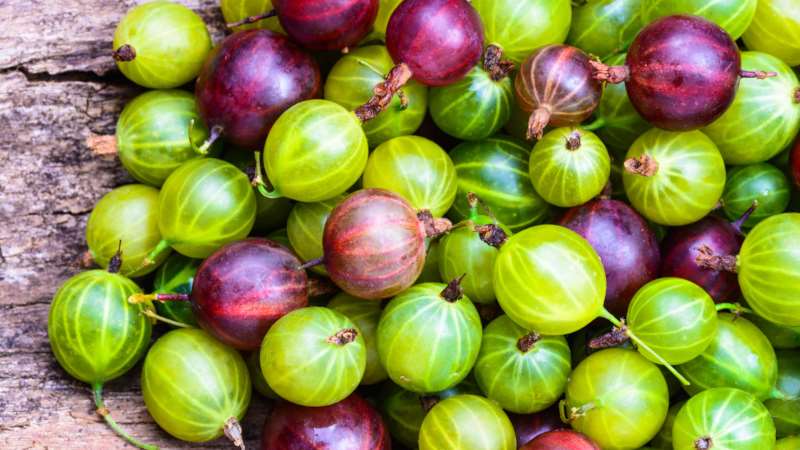
Candy
Medium-sized bush with a dense crown. The curved shoots are covered with thorns. The berries are spherical, slightly elongated towards the tip. The weight of one is from 3 to 6 g, the color is from light pink to red.
The taste is sweet with a rich berry aroma; gardeners rate it 5. The pulp is jelly-like, pleasant, and there are few seeds. The Candy variety is planted in the southern and northern regions, because it is frost-resistant and is immune to diseases. Every year, gardeners harvest from 4 to 6 kg of sweet gooseberries from one bush.
Belarusian sugar
The height of the bush is up to 1 m, the shoots are powerful.Belarusian sugar bears fruit for 12-18 years, annually producing up to 5 kg of berries per bush. The fruits are large, the weight of one is from 4 to 10 g. The shape is oval, the peel is thin, the color is light green. In the light, the berries appear transparent.
The taste is balanced, the flesh is sweet and sugary, without sourness or bitterness. Gardeners value the variety for its self-fertility, easy care, and increased immunity to diseases and stable productivity. In use Belorussian sugar is universal.
Ural emerald
The bushes are spreading, up to 1 m high. The thorns are located along the entire length of the branches. The weight of the berries varies from 3 to 8 g, the color is light green or green, the skin is thin with a waxy coating.
The taste is sweet, the flesh is juicy. Ural emerald is slightly affected by powdery mildew and anthracnose and shows stable yields regardless of weather conditions. From 3 to 7 kg of crop is harvested from the plant every summer. Gooseberries are suitable for fresh consumption, as well as drying or freezing for the winter.
White Nights
The bushes are neat, low, with a compact crown, and take up little space in the garden plot. The berries are small, the weight of one is about 3 g. The color is yellowish with a green tint, the flesh is sweet with a pleasant aroma. The skin is medium thick, there are few seeds.
The advantage of this variety is that after ripening the berries do not fall off. White nights are frost-resistant and easy to care for. Productivity - from 4 to 6 kg per bush.
Krasnoslavyansky
The plant is of medium height, shoots grow upward. The shape of the berries is spherical, the color is dark red or burgundy, the peel is thin. The pulp is pleasant, the taste is sweet, without a sour or bitter aftertaste. The weight of the berry is about 5 g, the yield is up to 6 kg per bush. Round shape, few seeds.
Krasnoslavyansky is valued for its product and taste qualities, transportability and keeping quality. The variety is universal in application and is suitable for blanks.
Which gooseberry is the largest and sweetest?
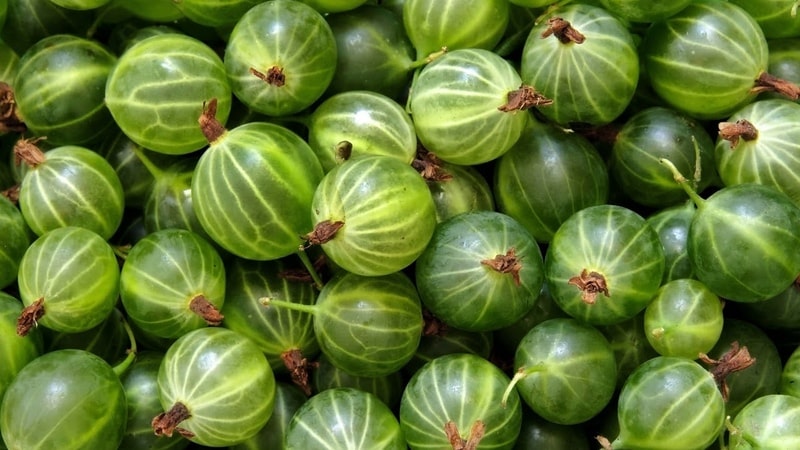
Is there an ideal variety of gooseberry - large, with juicy and sweet pulp, smooth skin and attractive color? Next, we will consider the top 4 varieties that have won the attention of gardeners throughout Russia.
Date fruit
Bushes of the Date variety are tall with a spreading crown. The fruiting period begins at the age of 8 years. The height of some plants reaches 2 m. The fruits are very large, the weight of one with proper care reaches 17 g. The shape is pear-shaped or spherical, the color varies from brown to dark burgundy.
The pulp is pleasant to the taste, light green in color, and tastes sweet. Dates have a strong berry aroma. Productivity - up to 8 kg per plant. The variety is resistant to frost.
Galatea
Beautiful berries of an oblong shape and a red-pink hue. The skin is dense, with a slight waxy coating. The taste is very sweet, sugary, with a bright honey aroma. The weight of the berry is about 7 g, the yield is 5 kg per plant. The variety is unpretentious in care and is popular among gardeners throughout Russia.
Gooseberries make healthy and juicy summer snacks and winter preparations.
Russian yellow
Medium-sized bushes reach a height of 1 m, the thorniness and spreading of shoots is average. The berries are oval, weighing from 6 to 9 g, the peel is yellowish-amber.
The taste is sweet with a pleasant aftertaste, so Russian yellow is ideal for fresh consumption. After ripening, the gooseberries do not fall off; from 5 to 7 kg of fruit are collected from the bush. The advantages of the variety include transportability, attractive commercial qualities, and resistance to drought and frost.
Moscow red
The bushes are medium in size, the shoots are medium thorny. When ripe, the berries acquire a red-violet color, which attracts many gardeners.
The peel is thin, matte, with a waxy coating. The weight of the berry varies from 5 to 10 g, the pulp is sweet, the aroma is rich. The dense peel allows gooseberries to be transported over long distances without loss of taste and marketability. Productivity - up to 11 kg per bush. Moscow Red is universal in application.
Attention! In winter, gooseberry bushes need shelter to protect them from severe frosts and winds. Gardeners tie up the branches and lay them on the ground, with a wooden board placed on top. The bush is covered with burlap or other dense material. Remove the protection in the spring, after the last frost has passed. Such events are held in the southern, central and northern regions of the country.
Sweet varieties for regions
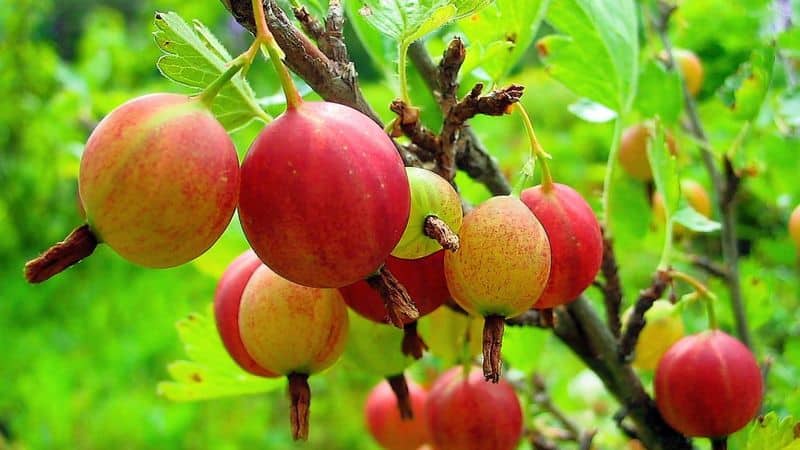
Productivity is affected not only by proper care, but also by the selection of a suitable variety depending on the growing region. Varieties that perform well in the south may give the exact opposite result in the north.
Central Russia
Gooseberries, unlike strawberries or raspberries, do not require a lot of sunlight. Therefore, most varieties take root in central Russia - the climate in these lands is moderate, there is little rain, and frosts are rare. The following sweet varieties are suitable for planting.
Beryl
Shrubs are medium-sized, densely leafy. The weight of the fruit is from 4 to 8 g, the shape is spherical, the color is light green. The peel is thin, the flesh has a jelly-like consistency. Productivity reaches 3-4 kg per plant. Beryl tolerates prolonged absence of moisture, resistant to powdery mildew and insect pests.
Plum
A favorite variety of many gardeners in central Russia. Unpretentious plants provide a stable harvest - up to 12 kg per bush. The berries are round, dark burgundy in color, weighing up to 6 g. The pulp is juicy, there are few seeds, the taste is sweet. Plum is universal in use and exudes a delicate berry aroma even after picking.
Neslukhovsky
The bushes are powerful, with straight-growing shoots. The berries are large, the average weight of one is 6 g. The skin is dense, with slight pubescence. The color is dark red, there are light stripes and a waxy coating. Neslukhovsky is resistant to septoria and anthracnose, does not crumble and does not lose its taste. Productivity - up to 6 kg per bush.
Attention! To drink tea with healthy and tasty gooseberries on winter evenings, housewives freeze the berries. They use different methods for this. The first is freezing whole berries in an airtight container. The second is freezing gooseberries in sugar or sugar syrup. Some housewives make puree from the berries, place them in cups and cover with cling film.
Siberia
To get a gooseberry harvest in Siberia, it is important to pay attention to watering, fertilizing, pruning and covering the bushes for the winter. Only if you follow all the rules and recommendations will you be able to collect sweet and tasty berries. Siberia is characterized by frosts, frequent winds and fogs. The variety must be frost-resistant and immune to diseases and pests.
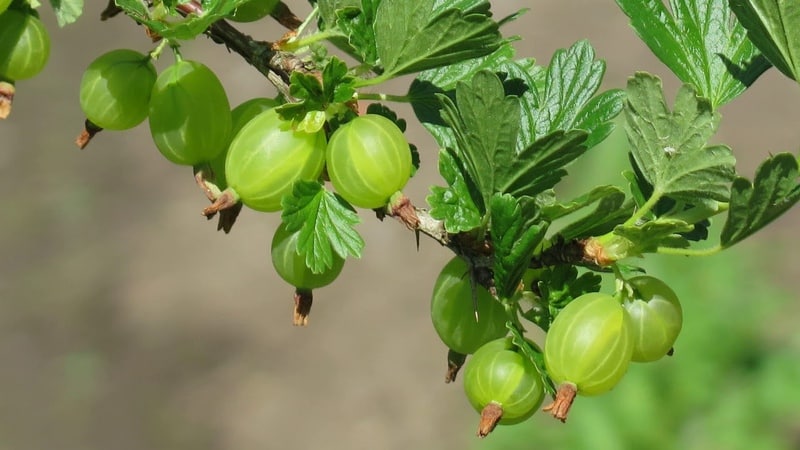
Commander
The variety is valued not only for its tasty and sweet fruits, but also for its lack of thorns. The plant is of medium height, the crown is spreading, the shoots are erect. The weight of the berry varies from 4.5 to 5.5 g, the shape is round, the peel is thin and glossy. The color is dark burgundy with a purple tint, the flesh is crimson.
The taste is juicy and sweet, and is universal in use. The yield is stable - from 2 to 3 kg per bush.The commander can withstand temperatures down to -30°C. The shrub blooms late, so the risk of frost is reduced.
Lighthouse
The berries are small, the weight of one is about 3 g. The shape is round-spherical, the taste is delicate and sweet, sometimes with a slight sourness. The color of the peel is red-cherry, burgundy. Productivity - up to 3 kg per plant. The lighthouse is resistant to sudden weather changes and is suitable for transportation and long-term storage.
Eaglet
Bushes up to 1 m high are suitable for planting in a compact area. The crown is medium dense, there are few thorns. The weight of the berry is from 4 to 6 g, the shape is rounded-oblong, the color is dark purple, black or burgundy when ripe. The skin is thin with a waxy coating.
The pulp is pleasant to the taste, there are few seeds. The eaglet is not susceptible to rot and rarely suffers from powdery mildew or anthracnose. With a lack of moisture, some berries become slightly sour.
Ural
In the short and cool Ural summer, gardeners grow early or medium varieties. The berries ripen by mid-summer, do not cause much trouble and are resistant to insect pests.
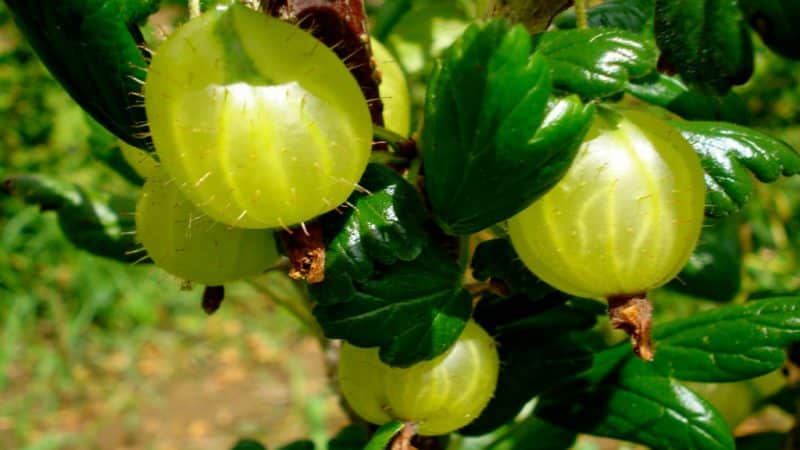
Altai license plate
A mid-early variety for growing in unpredictable weather conditions. The bushes are slightly spreading, medium-sized. The berries are round and large, the weight of one is 5-8 g. The color is yellow-amber, the peel is of medium thickness with slight pubescence.
Altai numbered is self-fertile; pollinators are not needed to obtain a harvest. It takes root in loamy soils and is unpretentious in care. The shrub begins to bear fruit in the 5th year, the yield is up to 15 kg per plant. The variety is prone to shedding, so it is recommended to pick sweet berries on time.
Ural pink
The winter-hardy variety is slightly affected by sawflies and is frost- and drought-resistant.The weight of the berry is from 3 to 7 g, the color is cherry, some fruits have blurry orange spots. The taste is sweet, the flesh is juicy, there are few seeds. Productivity - up to 10 kg per bush. It is easy to collect gooseberries - the bushes have few thorns, and they are not located along the entire length of the shoot, but only closer to the center.
Senator
Gooseberries are frost-resistant and can tolerate prolonged absence of moisture without consequences. The berries are medium-sized, round, pink-red in color, and when ripe they acquire a burgundy color. Productivity - up to 5 kg per bush. To obtain a rich harvest, it is recommended to feed the shrubs with mineral fertilizers.
Northwest
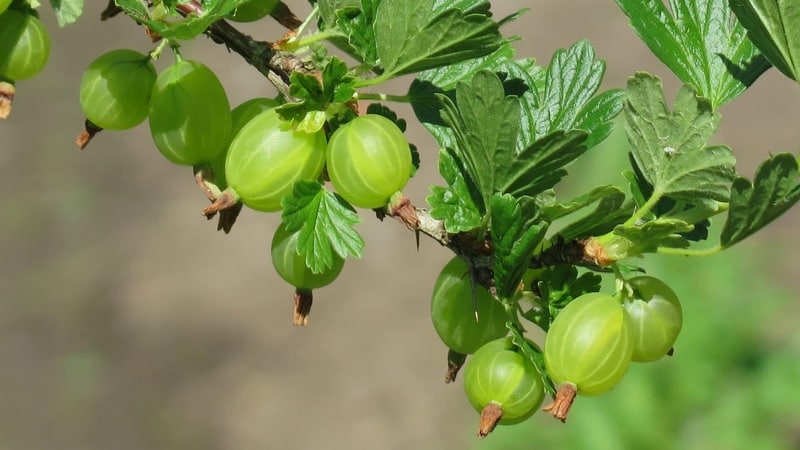
The North-West has a temperate climate with warm summers, cloudy weather, and moderate humidity. Winter is mild, ideal for autumn planting of fruit and berry crops.
Leningradets
The fruits are large, weighing up to 10 g. The color is red-violet, the thin skin has slight pubescence. The taste is sweet, the pulp is juicy and has a strong aroma. Medium-sized shrubs do not require special attention. The yield of the Leningradets variety is about 8 kg per bush per season.
Grushenka
The thornless variety got its name due to the pear-shaped berries. The bushes are medium-sized, semi-spreading, the foliage is dense. The skin is dense, so the fruits do not crack after harvesting and are suitable for transportation over long distances. Berry weight is from 4 to 5 g, yield is up to 6 kg per bush. Gooseberries are sweet, with a tart aftertaste. The use of berries is universal.
Amber
The mid-early variety ripens by the end of June. The fruits are yellow-amber. The taste is juicy and sweet, the aroma honey. Berry weight is up to 5 g, yield is about 10 kg per plant per season.For good fruiting, gardeners plant Yantarny in sunny areas.
Conclusion
Gardeners in the central regions of the country choose Plum or Neslukhov gooseberries, summer residents from the Urals or Siberia choose Altai license plate, Mayak, Senator. Those who want to grow not only sweet, but also large berries are advised to pay attention to the Moscow Red, Russian Yellow or Date varieties. Jams and preserves are prepared from juicy and sugary fruits, which are added to tea, milk porridges, and baked goods. Some housewives freeze gooseberries for the winter as whole berries or in the form of puree.